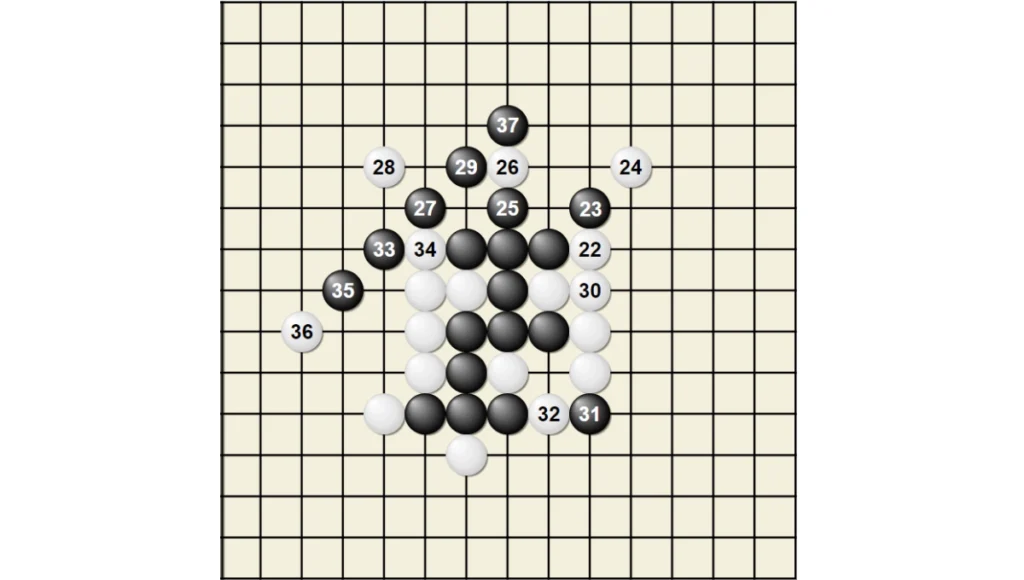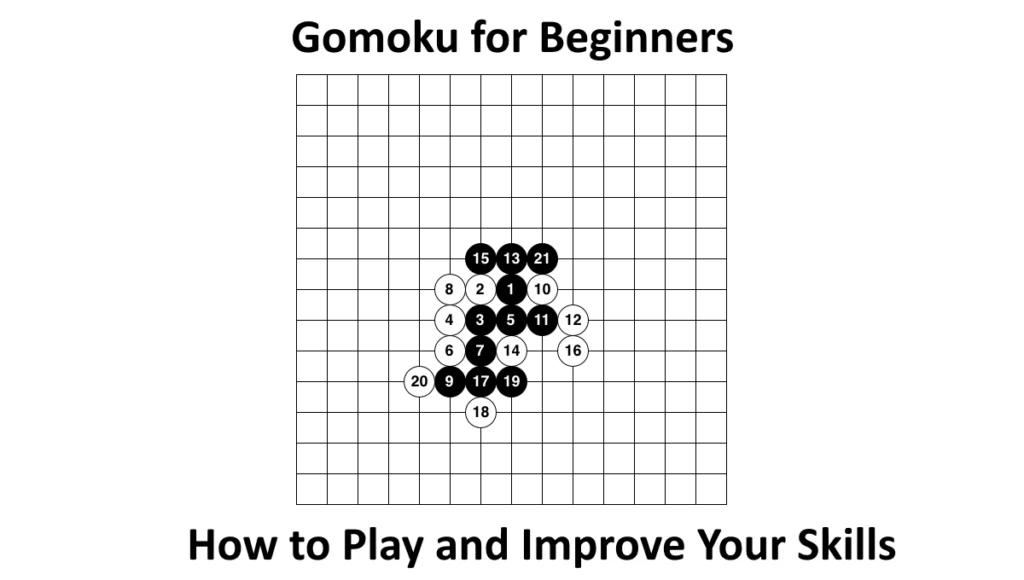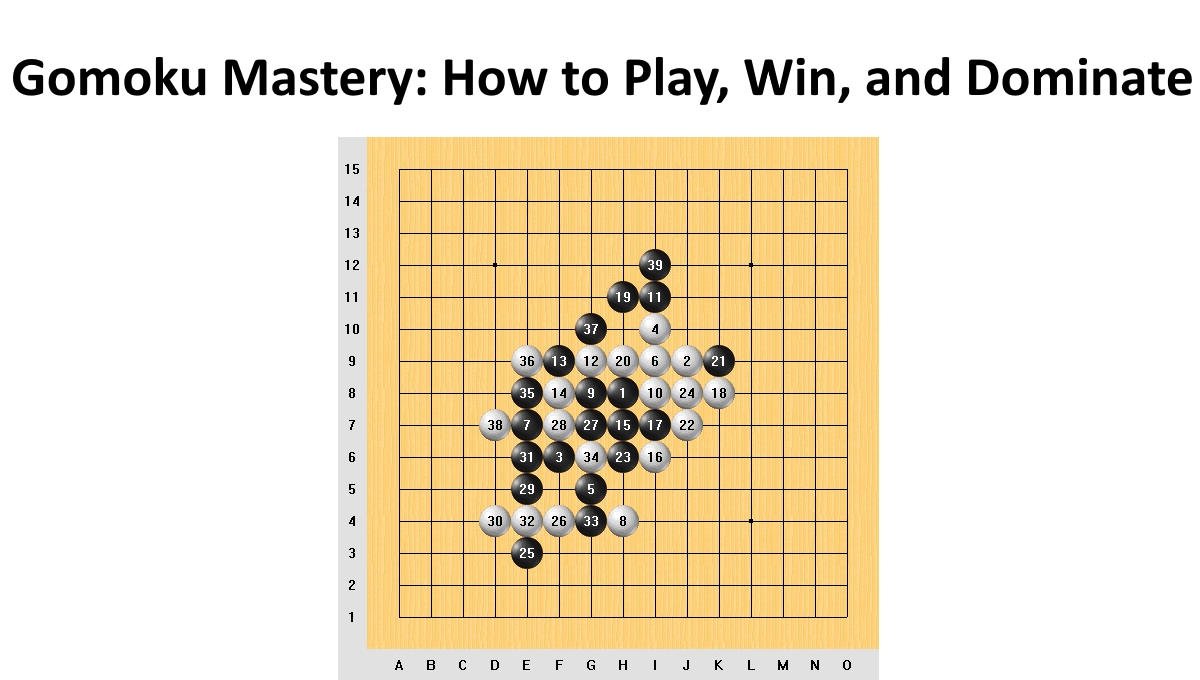How to Play Gomoku: Gomoku is a simple yet challenging game that has been enjoyed by people of all ages for centuries. Also known as Five in a Row, it requires two players to strategically place pieces on a board in an attempt to create a line of five. In this article, we’ll guide you through the rules, strategies, and tips to help you master this game and become a Gomoku champion.

Table of Contents
What is Gomoku?
Gomoku is a two-player strategy board game that originated in Japan. The game is also known as Five in a Row, since the objective is to create a line of five pieces in a row, either horizontally, vertically, or diagonally. The game can be played on a traditional board, or on a computer or smartphone.
Gomoku Board and Pieces
The standard Gomoku board is a 15×15 square grid. The pieces used are usually black and white stones or disks. Black goes first, and the player’s alternate turns until the game ends.
How to Play Gomoku
Basic Rules
To play Gomoku, players take turns placing their stones on the board, one at a time. The goal is to get five stones in a row, either horizontally, vertically, or diagonally. The game ends when either player achieves this goal, or when the board is filled up and no more moves can be made.
Winning Conditions
The player who first places five stones in a row wins the game. If both players get five stones in a row on the same turn, the game is considered a tie.

Gomoku Strategies and Tips
Opening Strategies
The opening moves in Gomoku can set the tone for the entire game. A strong opening can give a player a significant advantage, while a weak opening can put them at a disadvantage. Some common opening strategies include:
- Corner strategy: Placing a stone in one of the corners of the board is a popular opening move, since it creates more potential lines for the player to build on.
- Center strategy: Placing a stone in the center of the board is another popular opening move, since it allows the player to control the board and build lines in multiple directions.
- Side strategy: Placing a stone on one of the sides of the board can be a good way to create a strong defense and block the opponent’s potential lines.
Defense Strategies
In Gomoku, defense is just as important as offense. A good defense can prevent the opponent from creating lines and force them to make defensive moves instead. Some common defense strategies include:
- Blocking: Blocking the opponent’s potential lines is a key defensive strategy. Placing a stone in between two of their stones can prevent them from connecting their line.
- Splitting: Splitting the opponent’s potential lines can also be an effective defense. Placing a stone in the middle of their line can prevent them from making a continuous row of five.
Attack Strategies
The offense is the best defense, and in Gomoku, attacking the opponent’s potential lines is a key strategy. Some common attack strategies include:
- Building: Building your own lines can put pressure on the opponent and force them to make defensive moves instead of building their own lines. Placing stones in strategic locations can help you create multiple potential lines and increase your chances of winning.
- Threatening: Threatening to make a line of four stones can force the opponent to block your potential line, giving you an opportunity to create another line elsewhere on the board.
- Trapping: Trapping the opponent by creating a line of four stones that can only be blocked in one direction can force them to give up their offensive strategy and focus on defense.
Advanced Gomoku Techniques
Gomoku is a game of strategy and tactics, and advanced techniques can help you gain an advantage over your opponent. Some of these techniques include:

Three-and-Four Rule
The Three-and-Four rule is a technique used to create potential lines and force the opponent to block them. By placing three stones in a row with an empty space on one side, you create a potential line that can be extended in either direction. If the opponent blocks one side, you can extend the line in the other direction, creating a line of four and putting pressure on the opponent.
Double Threats
Double threats are moves that create two potential lines at the same time, forcing the opponent to block one of them and giving you an opportunity to create a line elsewhere on the board. By placing a stone in a strategic location, you can create two potential lines that intersect at one point, making it difficult for the opponent to block both of them.
Other Techniques
Other advanced techniques in Gomoku include probing moves, sacrifice moves, and forcing moves. These techniques require a deep understanding of the game and its strategies and can help you gain an advantage over your opponent.
Gomoku Variations
Gomoku has many variations, including Free-Style Gomoku and Renju. Free-Style Gomoku allows players to place stones anywhere on the board, while Renju introduces additional rules to prevent certain types of moves. These variations can add new challenges and strategies to the game.
Gomoku Online and AI Programs
Gomoku can be played online against other players from around the world. There are also AI programs that can play Gomoku at a high level, providing a challenging opponent for players to test their skills against.
Gomoku Tournaments
Gomoku tournaments are held around the world, with players competing for cash prizes and recognition as Gomoku champions. These tournaments attract players from all over the world and provide an opportunity for players to showcase their skills.
Frequently Asked Questions (FAQs)
Is Gomoku easy to learn?
Yes, Gomoku is easy to learn but difficult to master. The basic rules can be learned quickly, but mastering the strategies and techniques takes time and practice.
Can Gomoku be played online?
Yes, Gomoku can be played online against other players from around the world.
What are some common opening strategies in Gomoku?
Some common opening strategies in Gomoku include the corner strategy, center strategy, and side strategy.
What are some advanced Gomoku techniques?
Some advanced Gomoku techniques include the Three-and-Four rule, double threats, probing moves, sacrifice moves, and forcing moves.
Are there Gomoku tournaments?
Yes, Gomoku tournaments are held around the world, with players competing for cash prizes and recognition as Gomoku champions.
Conclusion
How to Play Gomoku: Gomoku is a fun and challenging game that requires strategic thinking and careful planning. By following the basic rules and using some of the advanced techniques and strategies, you can increase your chances of winning and becoming a skilled Gomoku player. Whether playing online or in a tournament, Gomoku provides an opportunity to showcase your skills and compete against other players from around the world.
If you’re interested in learning more about Gomoku and its strategies, there are many resources available online, including tutorials, forums, and AI programs. With practice and dedication, you can become a Gomoku master and take your place among the top players in the world.
Also, you can read more about
- How to Record from Apple Music – Tips and Tricks for Every Device
- How to Create Emergency Policies in Microsoft Teams Admin Center
Don’t forget to support us by following us on Google News or Returning to the home page TopicsTalk
Join Telegram and WhatsApp for More updates
Follow us on social media

